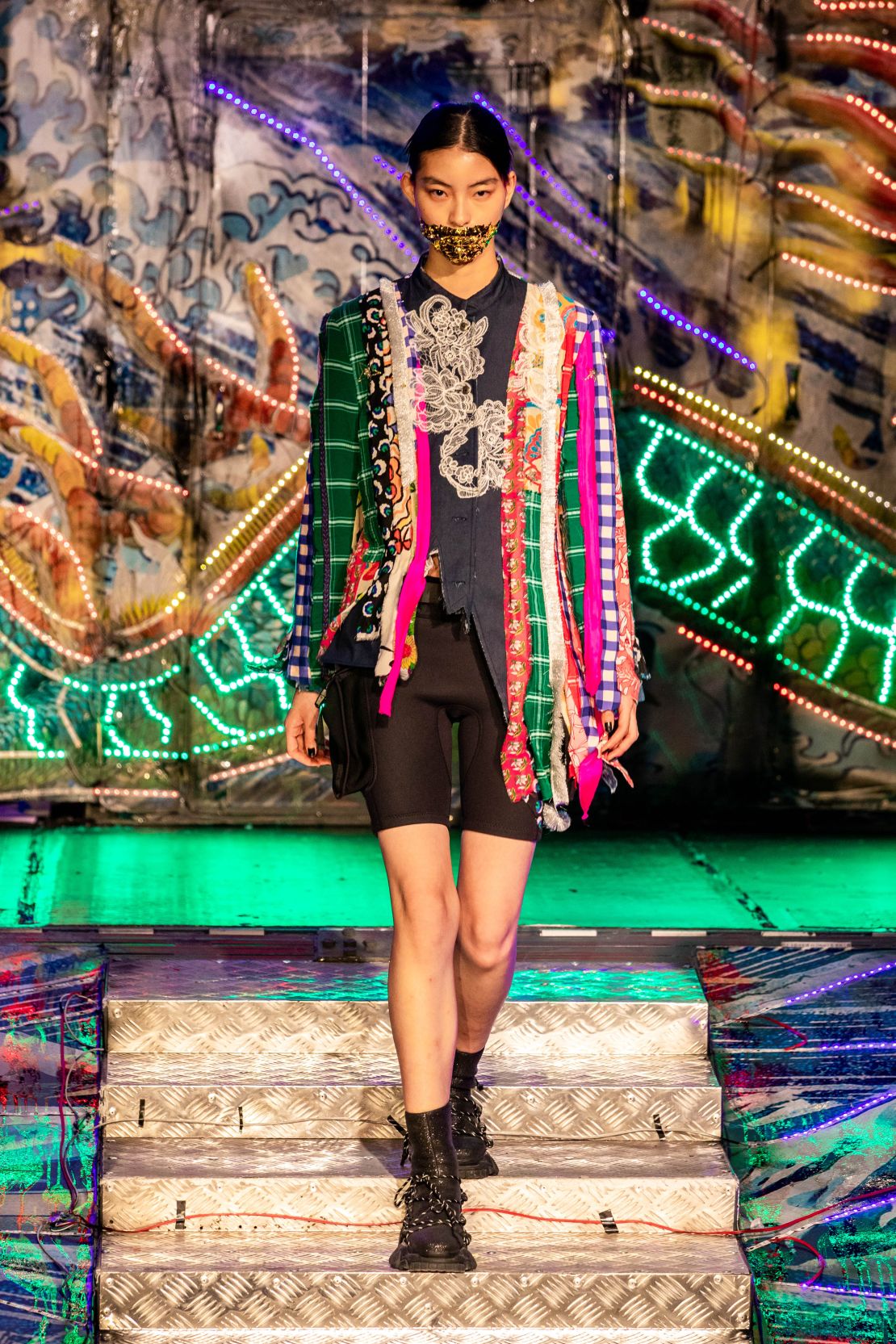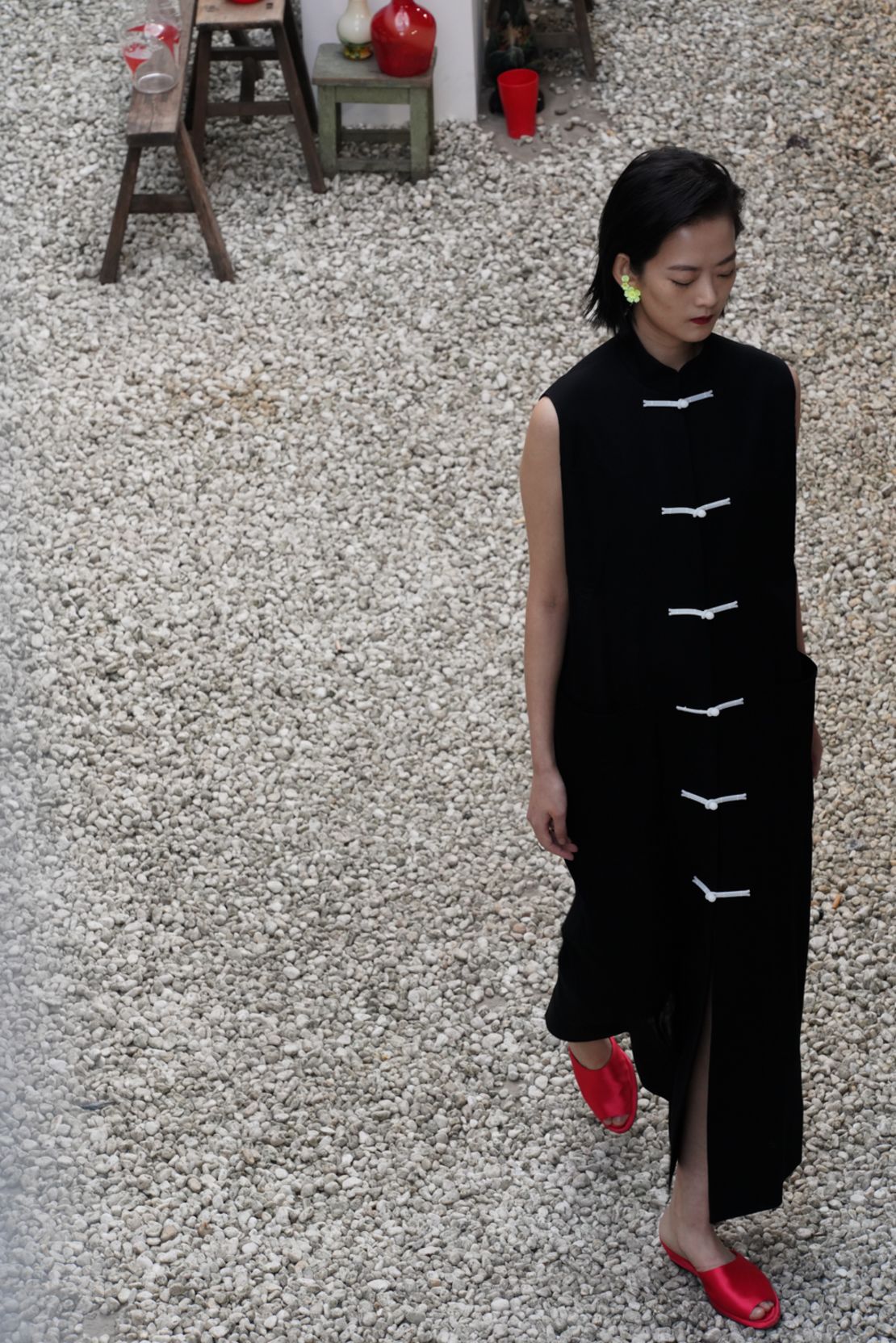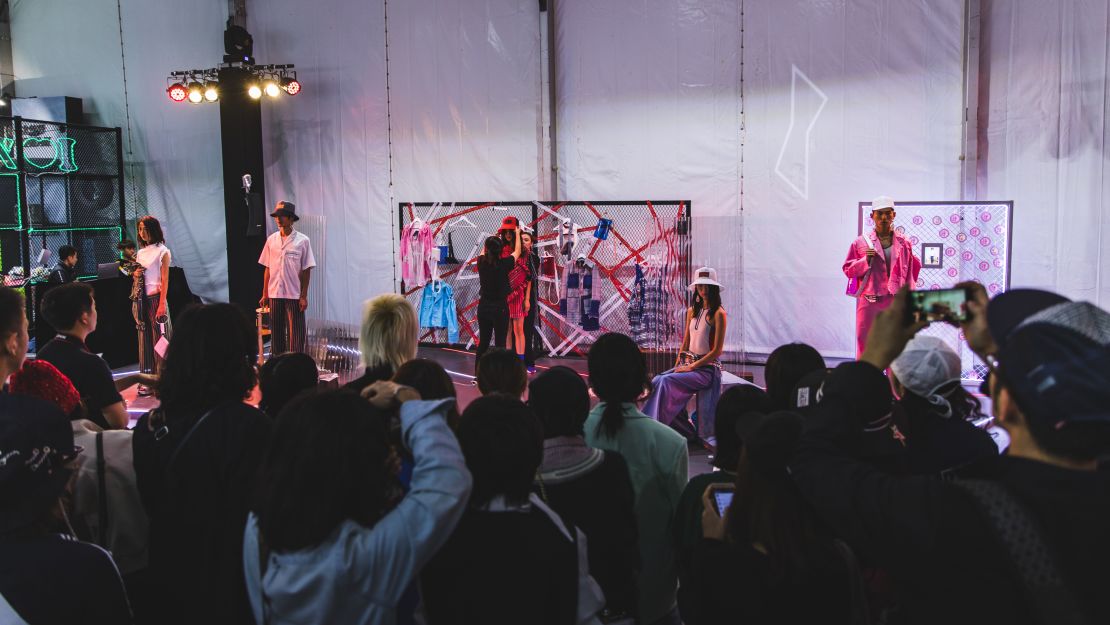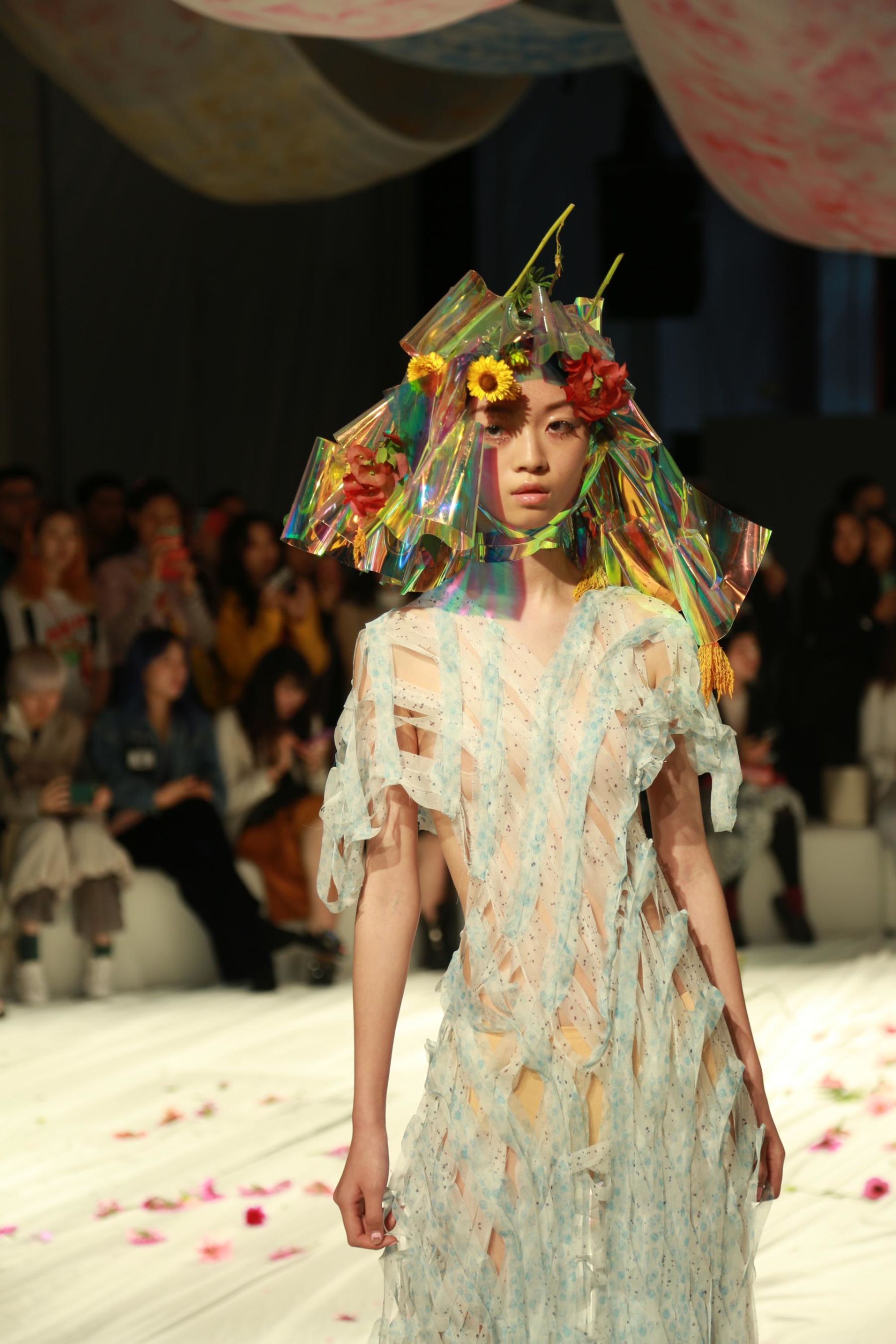By now, it’s clear that every global fashion brand wants to harness the massive spending power of China’s urban middle class. But Shanghai Fashion Week suggests that there’s also a growing force of domestic talent ready to tip the scales.
Chinese designers are having their moment, both at home and at the “Big Four” (fashion weeks in New York, London, Paris and Milan). And this Spring-Summer 2019 season has underscored their influence, especially among an outspoken, style-conscious millennial generation.
Shanghai Fashion Week is still considered secondary to the main circuit, but it has grown considerably since its 2003 debut, nearly doubling in size in the past five years.
Hip-hop wear and Balenciaga-inspired sneakers may rule Shanghai’s streets, but inside the tents, commercial brands and emerging designers brought diverse perspectives to what “Made in China” truly means. Here are four takeaways from the event.
Independent?designers have more clout

Angel Chen returned from her debut at New York Fashion Week to put on a stunning presentation against a neon backdrop, attracting hundreds of camera-ready fans. British fashion blogger Susie Bubble, meanwhile, shared the creations of Chinese labels with swelling global influence – like Shushu/Tong, which was once picked up by US retailer Opening Ceremony, and promising newcomers like 8on8 – with her half a million Instagram followers.
On the main stage, well-known stylists teamed up with commercial brands for prestige points, and mass-market partnerships gave an edge to designers’ marketing efforts. Budweiser partnered with New York-based brand Private Policy, led by Parsons graduates Haoran Li and Siying Qu, while Converse cemented its role in China’s streetwear culture by partnering with London-based menswear designer Feng Chen Wang for a capsule collection.

Overseas independent labels gained ground too. Renowned Paris Fashion Week tradeshow Trano? gave visitors a preview of its official launch in China (as part of the next installment of Shanghai Fashion Week, in April 2019), with an immersive fashion show and exhibition featuring five European designers.
‘Made in China’ reimagined

The fashion industry has long strived to define what makes Chinese design Chinese, with domestic brands and creatives working to reclaim the “Made in China” tag that typically implies counterfeits and poor quality. This year, a state-run TV network broadcast the show “Fashion Master,” which took a stab at the issue through a “Project Runway”-like competition that encouraged emerging designers to incorporate symbols of Chinese heritage into their designs.
But while many of the show’s contestants – as well as previous generations of young designers – exhibited more exaggerated and obvious examples of Chinese imagery in their work, the looks on display at Shanghai Fashion Week runway were decidedly more mature, modern and subtle. This transition reveals a budding confidence in what it means to be a contemporary Chinese designer.
Highlights here included a thought-provoking exhibition, “New China Chic: A Fusion of East and West,” which featured the mixing of plaid and Asian-inspired prints from LVMH Prize nominee Snow Xue Gao. Menswear brand Pronounce merged the influences of Shanghai and Milan, the cities between which the label is based.
On the runway, Samuel Gui Yang presented a gentle blend of tailored women’s jackets and traditional Chinese button knots, Angel Chen dotted her Qing-Dynasty-meets-future aesthetic with elaborate dragon prints on men’s bodysuits, while Ximon Lee showcased an androgynous, pastel-toned ode to 1930s Chinese motifs and traditional cheongsam dresses.
Direct to Z-lennials

While the main stage shows were invitation-only, edgy platforms for up-and-coming designers, like Labelhood, are attracting bigger and younger crowds with huge purchasing potential and social media clout. This, among other things, gave young emerging designers like Susan Fang and Pronounce a shot at wider publicity among the next generation of Chinese consumers.
Powerful online influencers and selfie-hungry Gen Z and millennial consumers arrived in droves to document the highly anticipated runway events on WeChat, Weibo and the video platform Douyin.

Labelhood relocated to the Power Station of Art, one of Shanghai’s most impressive contemporary art museums, creating room for interactive fashion presentations and its first public market for up-and-coming designer, jewelry and lifestyle brands. Elsewhere, young, mobile-first shoppers had access to a new online-to-offline collaboration between Shanghai Fashion Week and the Alibaba-owned e-commerce giant, Tmall, which put around 20 designers in the public eye by boosting traffic to their online stores via a special brand channel.
Shades of sustainability

In a market where cheaply produced, fast fashion is just a click away, sustainability may seem like a hard sell. Yet, it continues to be a growing force at Shanghai Fashion Week, as both designers and industry leaders recognize China’s unique potential to reduce fashion’s environmental footprint.
Platforms like Greenevery[day] are attracting eco-conscious thought leaders to their workshops and exhibits, with previous participants having since graduated to the big stage.
This season, Zhang Na, of womenswear brand Fake Natoo, returned to the runway with her brand Reclothing Bank and a collection made from upcycled materials and environmentally friendly fabrics. Zhang, who has previously collaborated with brands like Starbucks and local food delivery giant Ele.me, brought elegance and bright colors to sustainable fashion in her “Heaven Sent” line, mixing the likes of cotton, linen, recycled PVC and fibers made from wood pulp.
Key global players in the sustainability fashion movement, including Kering and Woolmark, came together with Modern Media Group’s Shaway Yeh (founder of sustainability-focused agency Yehyehyeh and co-creative director of the video channel Nowness) to discuss China’s future role. On the production side, Yin Jiajue, the millennial general manager of a manufacturing company that produces garments for brands like Patagonia and Uniqlo, used the Business of Fashion China Summit to show audiences what sustainability in Chinese factories could look like.
